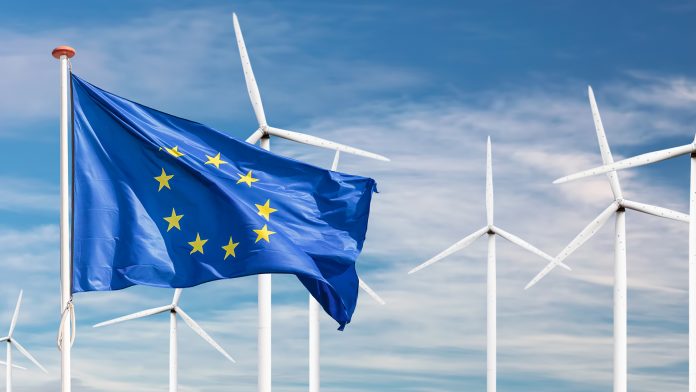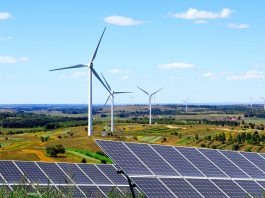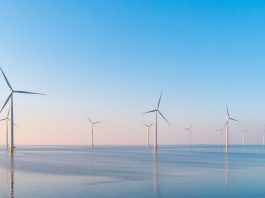The European Union (EU) has ambitious plans to develop offshore renewable energy sources. Innovation News Network explores the EU’s ambitions and implications for the global transition to clean energy sources.
With an increasing demand for reliable electricity in Europe, along with technological advancements in wind and solar power, it is clear that offshore renewables are set to play a vital role in meeting these needs.
We examine offshore renewable capacity within the EU and analyse how they plan to reach their net-zero emissions goal by 2050. We also delve into challenges when developing such substantial amounts of renewable energy at sea and outline more efficient strategies for achieving net-zero emissions targets while maintaining secure energy supplies.
What is offshore renewable energy?
Offshore renewable energy refers to utilising natural sources from within or near oceans, seas, and other bodies of water for generating electricity. It is an appealing alternative source of power in comparison to traditional non-renewable fossil fuel sources, such as coal and oil.
Each type of offshore renewable resource has unique characteristics that make it ideal for certain environments while less optimal in others, thus dictating its respective market potentials and limitations.
What offshore renewable energy technologies are used?
Offshore renewable energy technologies include:
- Tidal Power – This uses tidal movements in oceans or seas to generate electricity. Examples of this include barrages and lagoons that use turbines to capture the kinetic energy from water as it flows through them;
- Wave Energy – Wave energy conversion systems harness wave movement to turn mechanical generators which produce electricity. Such devices can be fixed on the seabed or floating platforms depending on their location and size;
- Floating wind – Floating wind turbines are positioned up to 60 meters above sea level, with anchoring systems connecting them directly to the seabed below. They take advantage of areas where deeper waters can accommodate larger turbine sizes than traditional mounted structures would allow for;
- Solar Farms- Solar panels placed in large arrays at sea convert sunlight into electricity using photovoltaic cells (PV). Offshore solar farms also benefit from increased efficiency due to higher levels of diffuse radiation being present over open water surfaces compared to land-based installations;
- Cold-Water Geothermal – Cold-water geothermal power is generated from hot springs found deep within the ocean floor and involves pumping cold seawater down pipes located underground until it becomes heated before returning back up the surface, producing steam used for generating power via turbines connected to generators;
- Marine Hydrokinetics (MHK) – MHK generally refers to any technology that captures energy from moving currents such as rivers or tides and converts it into clean electricity without burning fuel or releasing emissions into the atmosphere. Specific examples include river turbines, tidal stream generators and marine current turbines – each working differently but collectively capable of providing a reliable baseload power supply when deployed optimally; and
- Seabed Turbines – Seabed turbines operate similar way as other hydropower plants do – they use flowing currents underwater like rivers, estuaries and channels captured via an intake structure leading towards a series of submerged rotors inside a chamber attached with a generator set converting kinetic energy into electrical power which is then fed out onto national grid networks via submarine cable lines
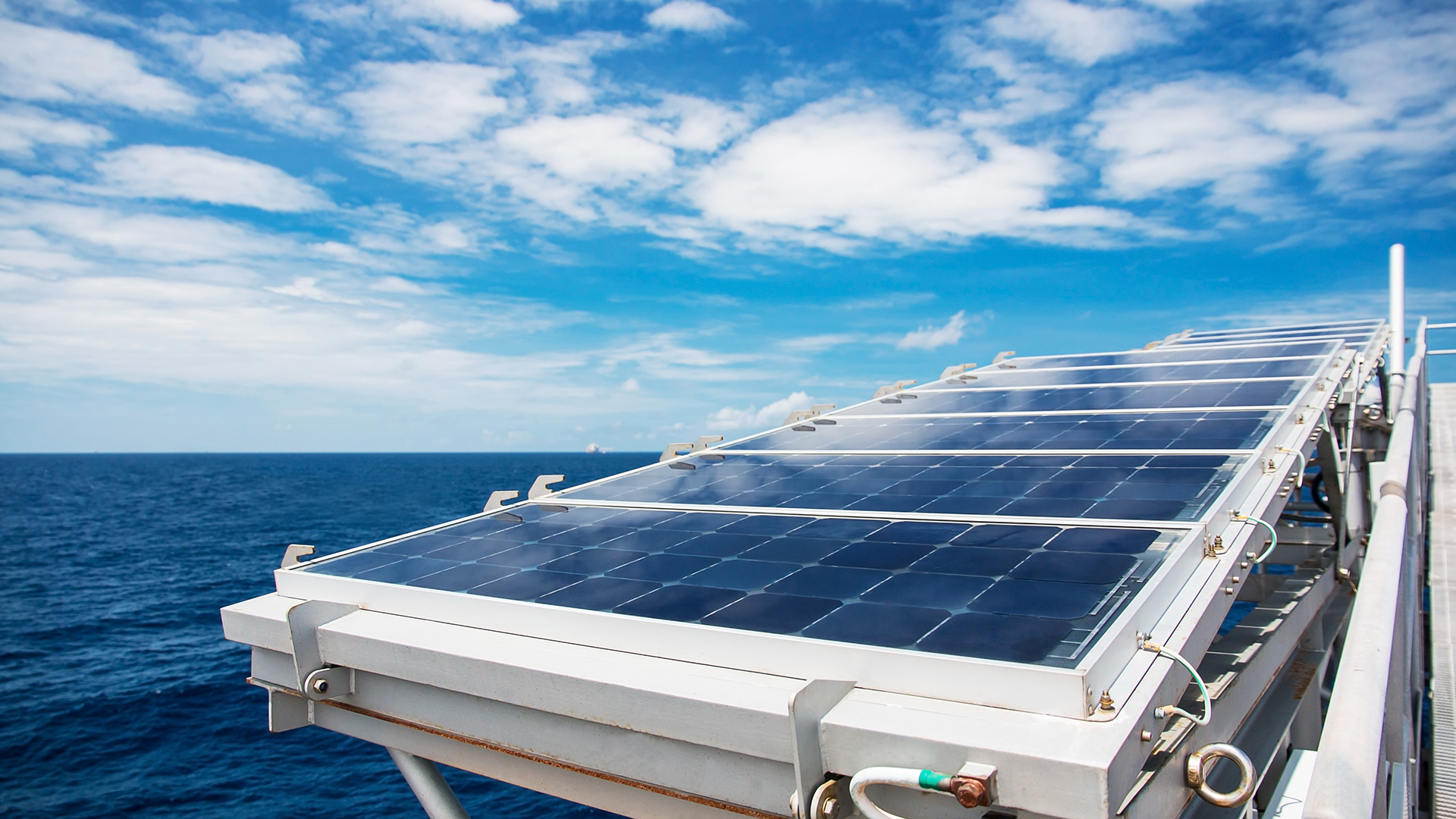
Overview of EU energy goals
Offshore renewable energy is increasingly important to the European Union’s overall energy strategy. To reduce carbon emissions and meet climate goals, the EU has set ambitious targets for offshore renewable energy capacities by 2030.
The goal of the EU’s 2020-2030 framework is to achieve a 27% share of renewables in total final energy consumption. Offshore wind power is expected to make up a significant portion of this target, with a 60GW capacity installed by 2030 – more than double what it was at the end of 2019.
The EU plans to increase marine energies such as tidal, wave, and ocean thermal energies from almost zero today to 5 GW by 2030. Alongside these measures, the EU will continue working on environmental protection policies related to developing and operating offshore renewable technologies across Europe’s waters.
To ensure that these goals are met, the European Commission (EC) proposed additional funding for clean energy research projects through its Horizon 2020 program. It is estimated that €11bn will be invested over seven years for innovation activities primarily focused on increased efficiency and cost reductions associated with offshore wind farms, floating turbines, grids and storage solutions.
Additionally, the EC recently announced plans for new legislation governing permitting processes to streamline operations across member states and facilitate investment into green infrastructure projects along coastal regions.
By working together through policy frameworks designed to promote growth in both economic competitiveness and sustainability objectives, the EU seeks to move closer towards its ambition for significantly higher levels of offshore renewable energy capacities throughout Europe by 2030.
As such, the current focus has shifted toward initiatives which stimulate further uptake in existing production models while simultaneously allowing space for exploration into novel technological innovations regarding harnessing future forms of offshore energy sources like hydrogen or geothermal electricity production systems.
Current offshore energy generation
The most common source of offshore energy generation is wind power. Wind turbines are installed on structures in bodies of water such as oceans, seas and lakes to capture this renewable energy resource.
Offshore wind farms have a much greater capacity for generating electricity than their onshore counterparts due to higher average wind speeds at sea level. As of 2020, Europe’s cumulative installed offshore wind capacity was over 26 GW, with an additional 6 GW under construction or planned worldwide.
In addition to wind-based sources, ocean thermal energy conversion (OTEC) utilises temperature differences between surface and subsurface seawater to generate electrical power or desalinate freshwater from saltwater.
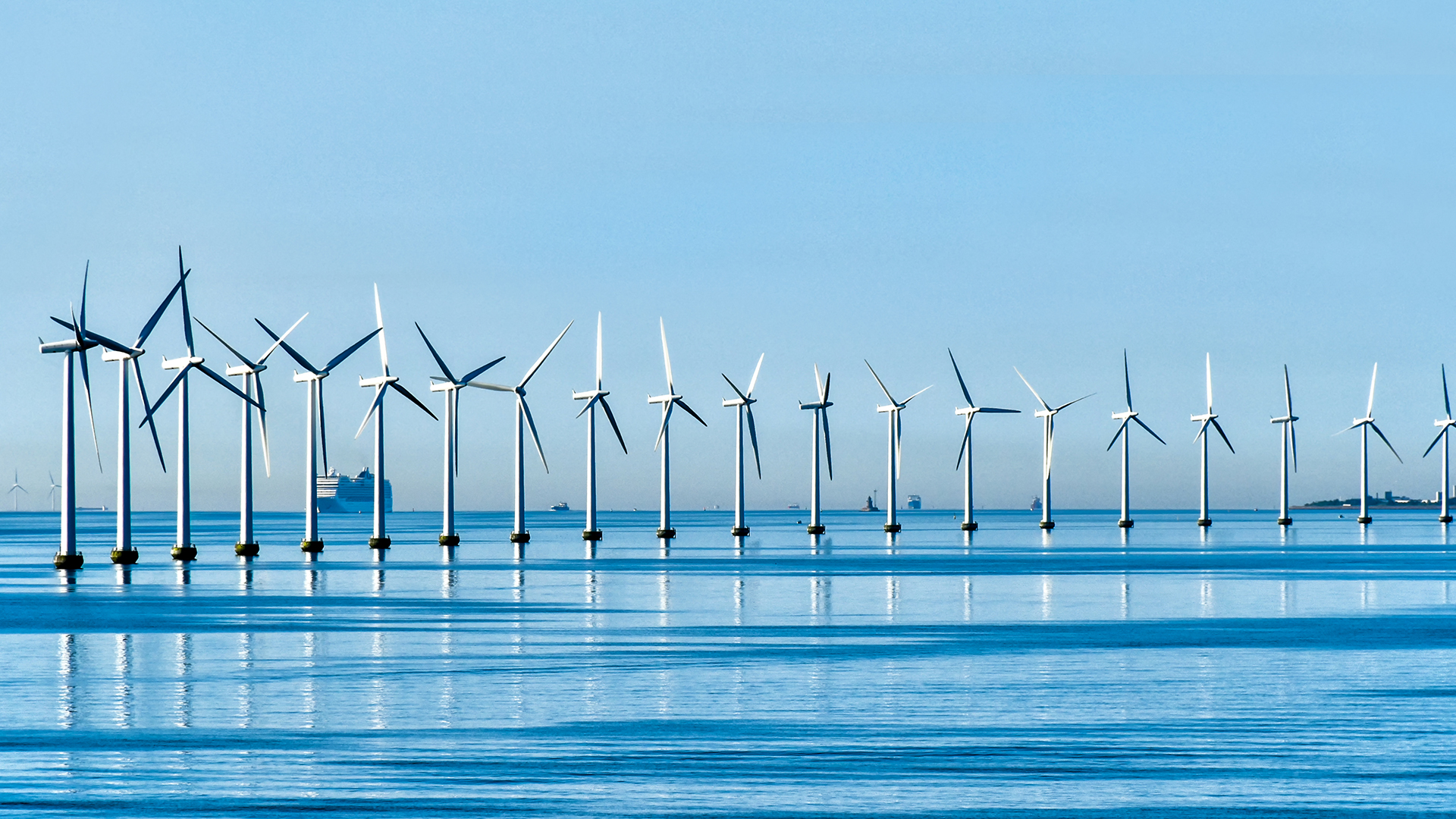
OTEC has potential applications all around the globe but so far remains at experimental stages with no commercial installations yet completed. Wave power also holds promise as a renewable energy source; however, few wave farms currently operate commercially due to the cost-prohibitive nature of existing technology associated with maintenance requirements and environmental restrictions.
Overall, current levels of offshore energy generation remain low compared to other forms of renewable energies like solar and hydroelectricity.
However, it holds great potential for expansion given its relative abundance in many regions worldwide combined with technological advancements in recent years, which aim to reduce costs associated with installing and operating these systems.
Benefits of offshore renewable energy sources
There are a number of benefits associated with offshore wind and other green energy sources, including:
- Renewable energy sources can provide a secure source of electricity as they do not rely on finite resources like fossil fuels;
- Offshore wind farms offer higher yields than those found on land due to the stronger winds at sea;
- Building out this capacity can create jobs across Europe’s coastal regions and contribute to economic growth;
- Investing in renewable sources helps decrease reliance on imports from foreign countries while also reducing greenhouse gas emissions; and
- It also increases regional energy independence, which reduces the risk of disruptions in supply should any one country experience issues or political instability.
These advantages make it clear why the EU’s open ocean ambitions are so important for achieving its targets for increasing renewable capacities within member states.
With these targets likely achievable through continued investment in both existing technologies and new innovations, the outlook for utilising clean power generated by waves and currents looks bright indeed.
As such, transitioning towards more sustainable forms of energy production appears inevitable if we wish to have a future powered by renewable means instead of relying upon increasingly scarce non-renewable options.
Challenges to achieving targets
Achieving the EU’s targets requires overcoming a variety of challenges that are complex and intertwined. The following table details some of the primary obstacles to meeting the EU’s goals
Each challenge comes with unique considerations that must be addressed when implementing policies related to offshore renewables in Europe. For example, there is a significant cost associated with installing and maintaining project facilities which is compounded by limited financial resources available for investment in this sector.
Furthermore, uncertainties related to project risks can lead to delays or costly changes during construction stages if not adequately assessed beforehand.
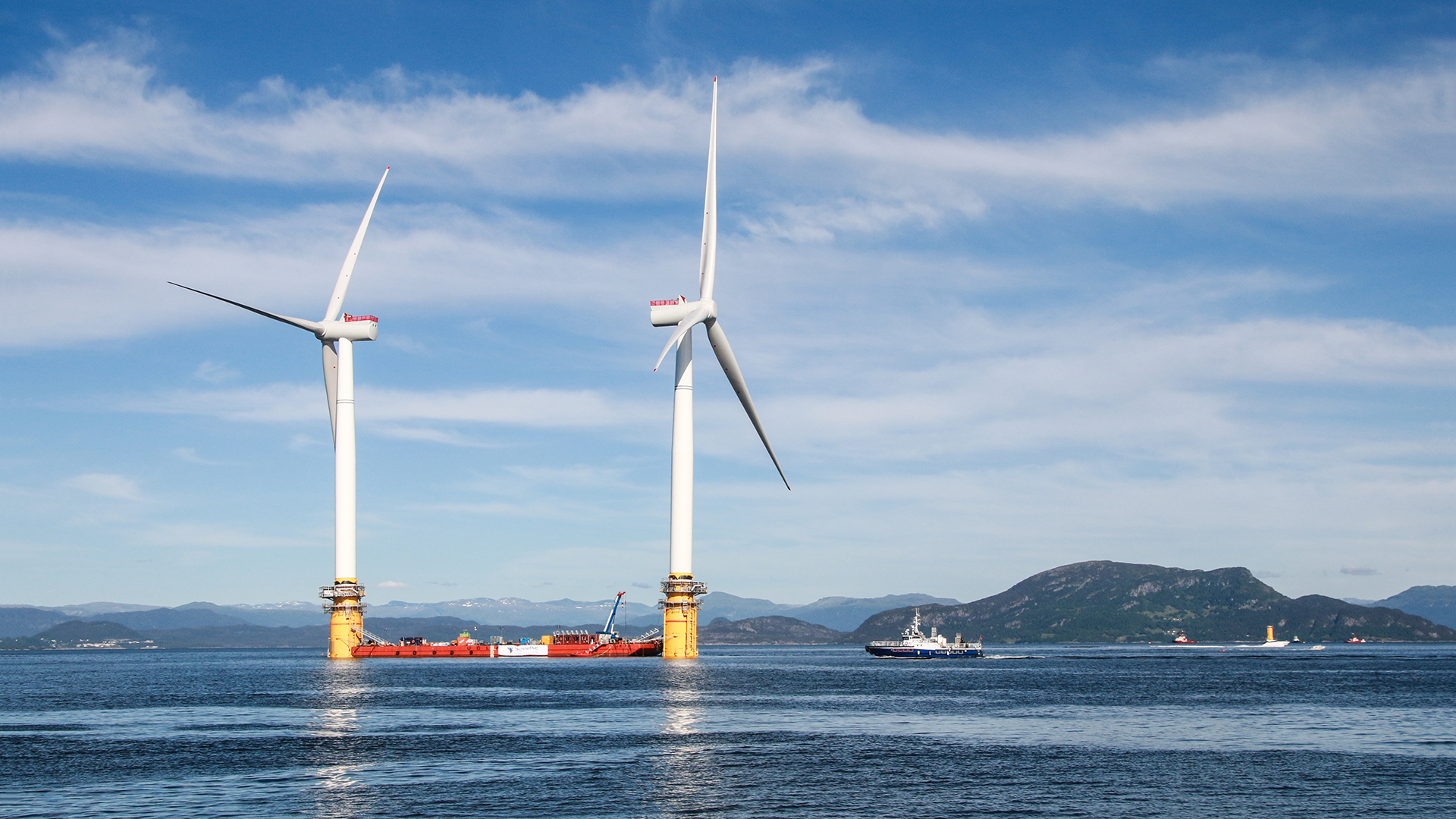
Moreover, grid connections pose particular difficulties since existing infrastructure may have limited capacity in heavily populated areas along coasts, while public resistance often stems from concerns about negative environmental impacts on marine life or disruptions caused by seafaring operations near shorelines.
Last but not least, technological advances are necessary both in terms of improving data security measures as well as developing more efficient ways of exploiting renewable sources like wind and waves over vast oceanic expanses where they are most abundant yet hardest to reach economically viable levels without assistance from modern technology solutions.
Given these complexities, it becomes apparent why regulations and legislation play an important role when attempting to meet the EU’s ambitions for offshore renewable energy capacities.
Regulations and legislation
The EU has put in place a legal framework for developing offshore renewable energy capacities, with several directives and regulations designed to support this objective.
These directives have laid out standards to be met when developing new projects while setting up licensing requirements and policies on how these projects should operate. Energy legislation such as the Renewable Directive 2009/28/EC set out specific measures related to the promotion of renewable energy sources, including offshore wind power.
The Offshore Safety Directive 2013/30/EU established safety regulations within all aspects of offshore operations, ensuring safe practices are followed during construction and operation phases.
The Marine Strategy Framework Directive 2008/56/EC sets out environmental protection guidelines which describe how marine ecosystems can be protected from potential damage due to offshore operations.
This directive outlines what steps need to be taken by member states before any activities commence in order to minimise impacts on sensitive habitats and species. All of these regulations form an important part of creating a supportive legal environment for advancing offshore renewables in Europe.
In addition, certain countries have implemented their own national policies or laws governing different aspects of renewable energy development. For example, France passed its National Energy Transition Law in 2015, which set ambitious targets for reducing carbon emissions through increased use of renewables such as offshore wind power.
Similarly, Germany’s Renewable Energy Sources Act provided incentives for developers looking to install large-scale offshore installations and also included provisions regarding noise levels at sea. These regulatory frameworks provide clear guidance on developing sustainable energy resources in European waters.
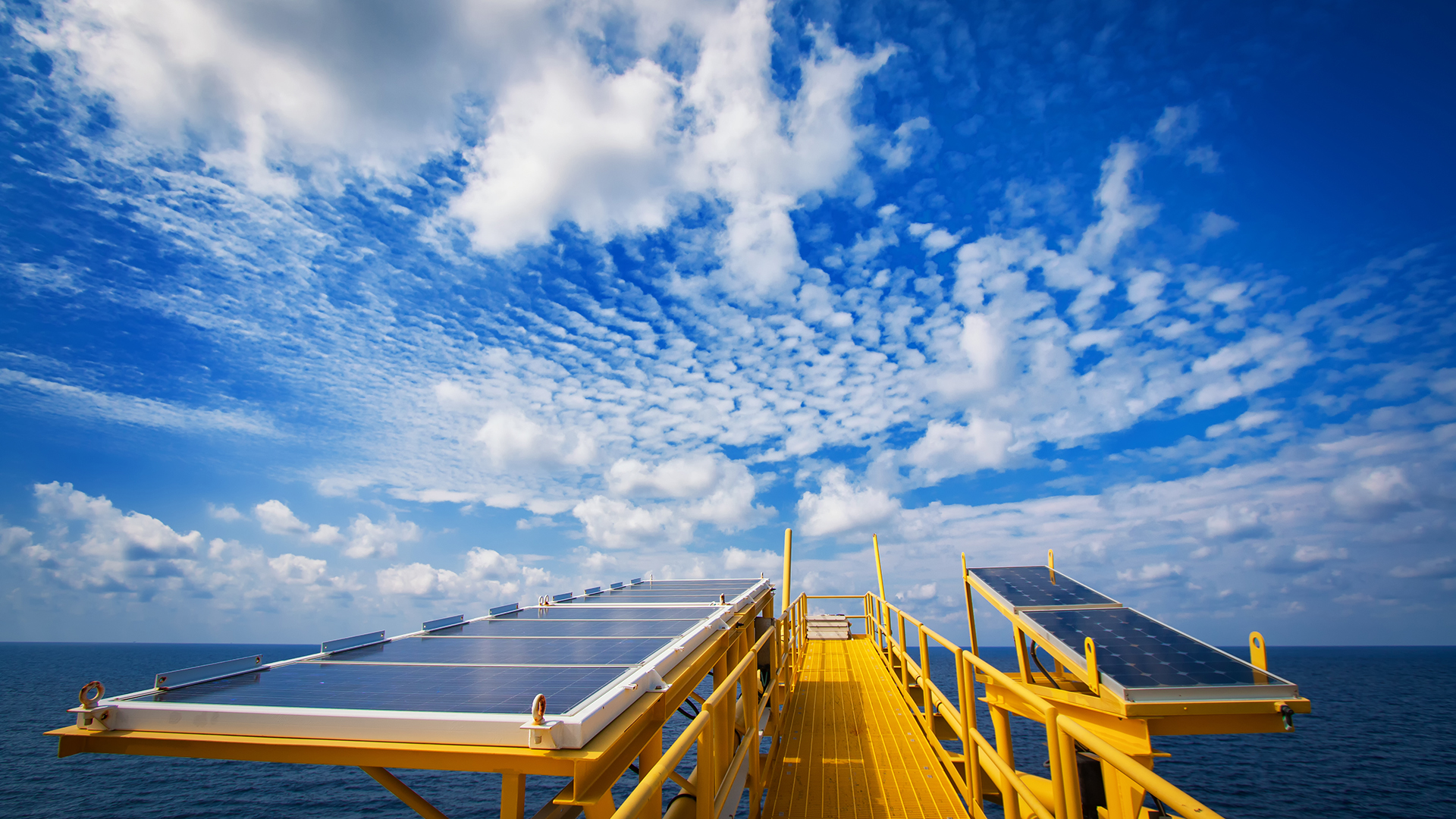
It will be essential that governments continue to work together to ensure effective implementation across all jurisdictions so that the region can realise its full potential in terms of clean energy production.
Financing of offshore renewable energy projects
The total cost of offshore renewable energy projects involves a complex network of investment sources, financing strategies and financial risks that must be weighed in order to bring them to fruition.
Various models exist for obtaining funds for large-scale investments in renewables. Private investors can provide capital for development as well as ongoing operations and maintenance costs; however, due to the long payback period associated with many renewable energy projects, private lenders may not always assume full responsibility for funding them.
Publicly funded entities have also stepped up and provided more than just grants—many offer technical assistance, loan guarantees and other forms of risk mitigation measures to facilitate successful deployment.
Additionally, public-private partnerships (PPPs) have emerged as one of the most popular approaches used by governments around the world to leverage both sectoral expertise and additional capital from private actors.
To ensure future success in securing adequate levels of financing for offshore renewable energy ventures, it is essential that all stakeholders involved understand the potential risks associated with each form of investment source or financing strategy chosen before committing resources towards said initiative.
By taking a comprehensive approach towards understanding the underlying economic elements at play within any given project context, stakeholders increase their chances of optimising returns on their investments while minimising financial exposure if things go wrong.
Through this methodical approach to assessing potential opportunities and pitfalls ahead of time, investors can make informed decisions about where best to allocate resources and create an ideal environment conducive to profitable outcomes over the long haul.
Infrastructure requirements
Offshore wind farms, wave and tidal power plants, and other forms of offshore renewable energy require specialised marine engineering, which must be factored into any plans.
Infrastructure requirements include turbines, foundations to secure them, cable networks to transport electricity from offshore sources to shore-based locations, as well as storage facilities that are capable of keeping excess energy generated during peak production periods.
The advancement in turbine technology has been essential in making large-scale investments feasible due to their ability to capture more energy with fewer units per area than previous models.
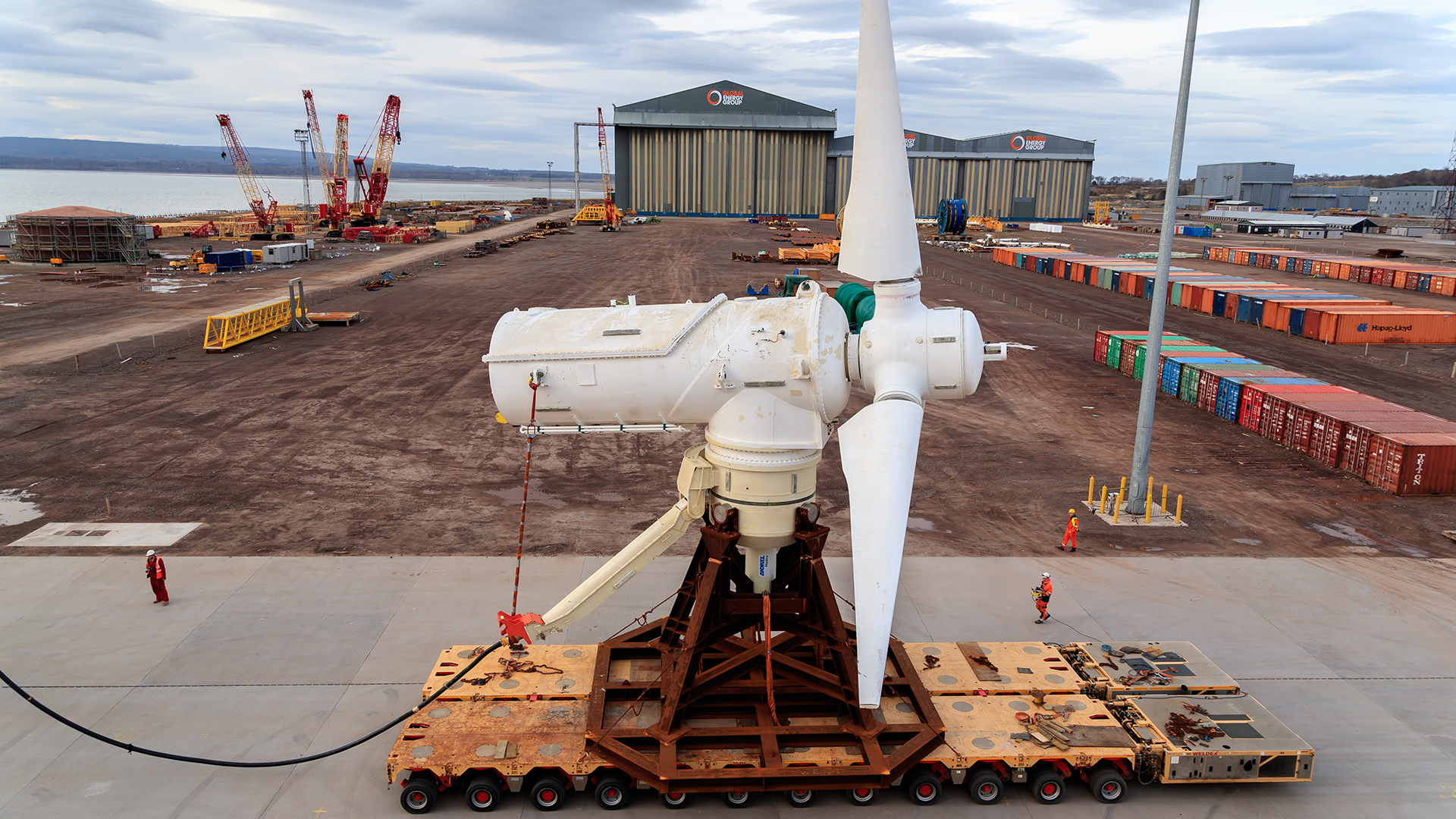
This has allowed for increased capacity at a much lower cost compared to traditional fossil fuel generators. In addition, advances in cable network designs have enabled the transmission of larger amounts of electricity from further away points without sacrificing efficiency and reliability.
Energy storage solutions such as batteries or compressed air systems are also necessary components if the full potential of renewables is to be achieved by providing access even when intermittent weather conditions cause output levels to fluctuate significantly.
To ensure efficient operation, these technologies must be integrated smoothly into existing grid systems across Europe while taking into account local needs and regulations. With the right combination of investment, research and development, along with supportive government policy frameworks, it is possible to create an environment conducive to unlocking the vast potential offered by offshore renewable energies.
Environmental impact considerations
When evaluating the EU’s ambitions for offshore renewable energy capacities, environmental impact considerations must be taken into account. The potential impacts of deploying and operating these technologies need to be carefully considered in order to ensure a safe and sustainable future.
The environmental effects associated with offshore renewable energy can range from reducing emissions of carbon dioxide (CO2) and other pollutants to enhancing energy security and efficiency, as well as protecting local ecosystems.
To better understand the implications of this technology on our environment, it is important to look at how each type of energy source has its own unique set of benefits and drawbacks.
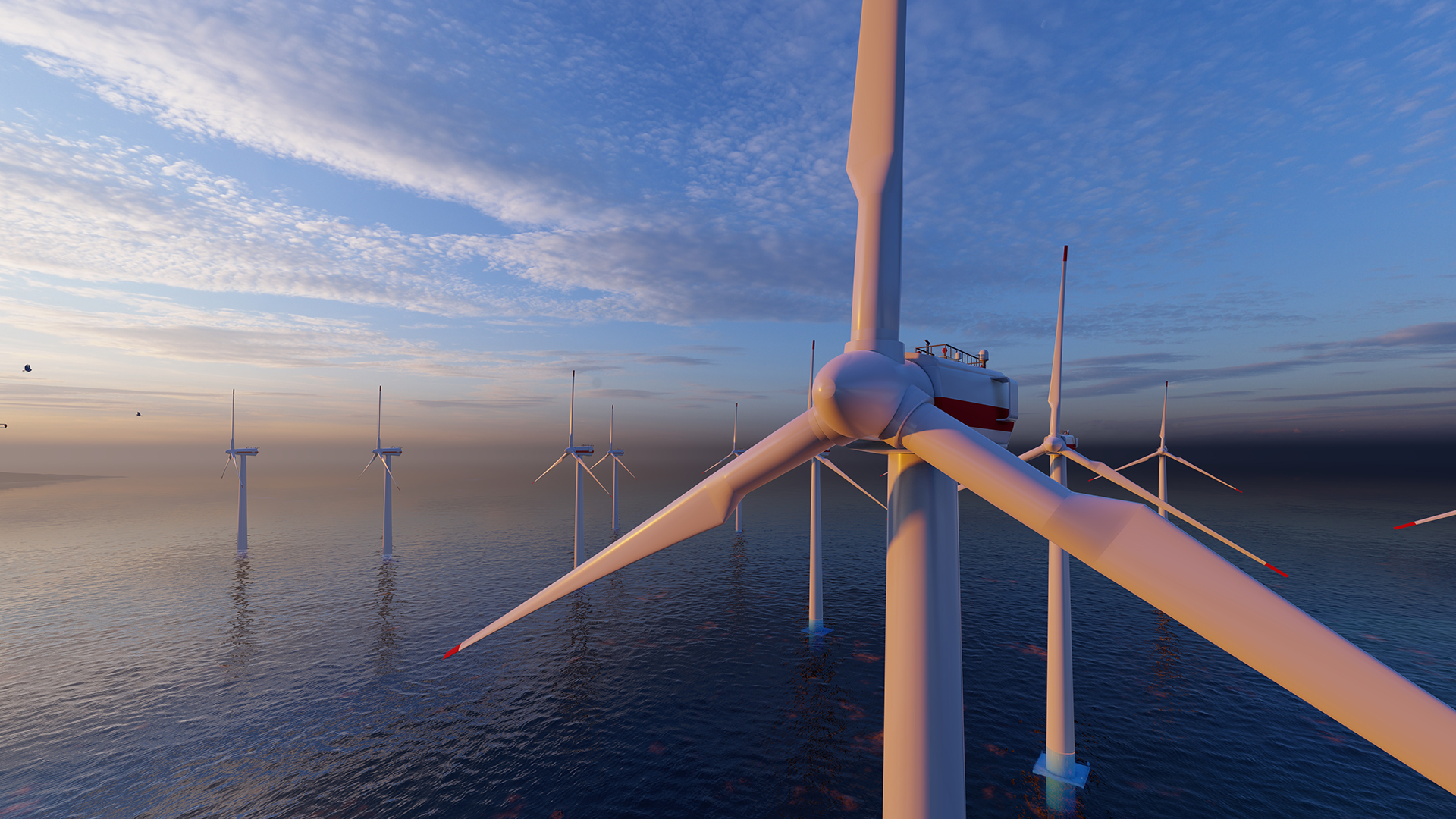
Wind power presents an attractive option due to low CO2 emission levels but may have minimal long-term effects on sea life. Tidal turbines produce lower volumes of CO2, but their installation could disrupt marine habitats.
While wave power has relatively low–moderate amounts of carbon output but there are potentially high risks when it comes to impacting ocean habitats. All types present opportunities for increasing energy security, improving energy efficiency, and protecting natural ecosystems, which should form a basis for decisions regarding deployment.
International cooperation opportunities
Ironically, as society strives to move towards more sustainable energy sources, it may require increased collaboration between nations.
To achieve the European Union’s (EU) ambitions for offshore renewable energy capacities, international cooperation opportunities are key. From intergovernmental agreements to partnerships and collaborations with stakeholders, there are several opportunities available:
- Governments can form multilateral or bilateral agreements with other governments to promote the sharing of projects and resources;
- Research institutions from multiple countries can collaborate on research initiatives related to renewable energy development;
- Companies from different countries can join forces in order to develop innovative technologies that facilitate the transition to clean energy; and
- International organisations such as the EU can provide funding for regional projects aimed at increasing access to renewable energy.
Through these efforts, combined with other strategies such as stakeholder engagement initiatives, progress towards achieving ambitious targets for offshore renewable energy capacity will be possible.
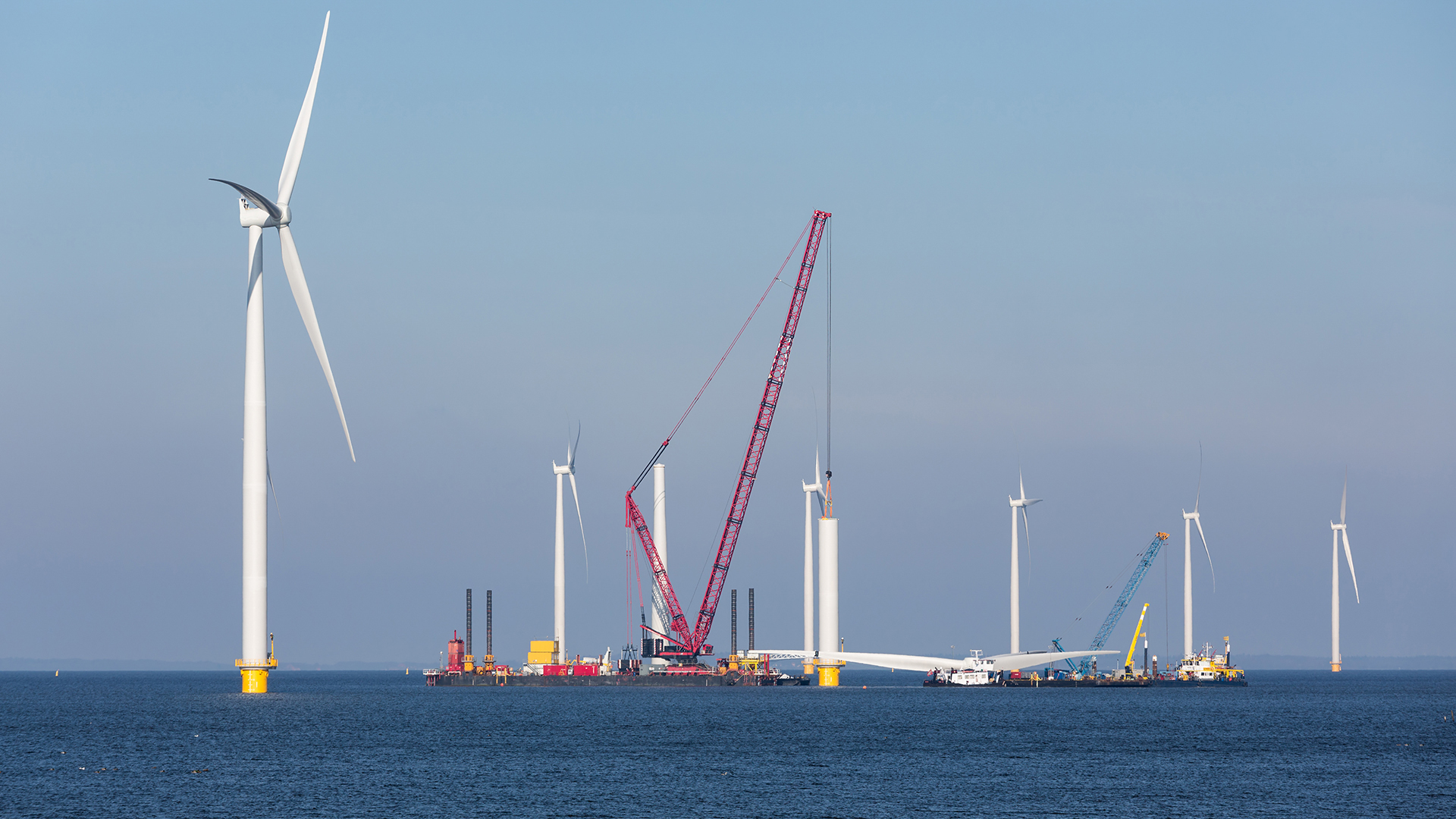
With strong international cooperation across all levels-governments, companies, and organizations-Europe has an opportunity to make giant strides in transitioning away from fossil fuels while still providing reliable access to electricity through renewables.
The future outlook for EU offshore renewable energy
To achieve its targets, the EU must focus on new technologies for both generating and storing electricity generated from renewable sources. Offshore wind farms are expected to lead the way, with more than half of the total capacity coming from this source alone.
However, other forms of renewable power, such as marine-based solar panels and wave/tidal energies, will also contribute significantly to reaching these targets.
Substantial investments are needed in infrastructure development and maintenance, as well as research into innovative solutions which can support growth in this sector. Additionally, policies need to be put in place which incentivise private companies to invest in offshore renewable projects too.
The EU currently faces challenges related to cost-efficiency, technical issues with existing infrastructure, public acceptance and legal frameworks, but if addressed effectively through strategic policymaking, then there is no doubt that Europe can become a leader in offshore renewable energy capacities within the next decade or so.

